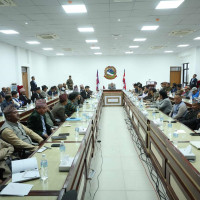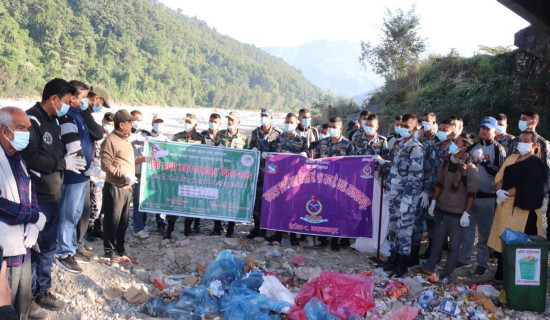- Thursday, 20 November 2025
Sudurpaschim tourism sites devoid of visitors
By Gokarna Dayal,Baitadi, Nov. 22: The Sudurpaschim Province government has spent over Rs. 1.21 billion on tourism infrastructure across various districts to attract tourists, yet most of these sites remain deserted.
For example, the Hirapur Recreational Park, built for Rs. 20 million by the Patan New Town Project under the federal government, has seen little to no visitors, both domestic and international.
Chief Engineer Bhupa Raj Paudel of the Patan New Town Project Office accepted that the park’s remote location has contributed to its underuse and plans are underway to construct a new recreational park at an alternative site. Similarly, Patan Airport, built with Rs. 170 million four years ago, has remained non-operational, leaving it desolate.
The provincial government alone has spent over Rs. 1.2 billion on structures aimed at promoting tourism, such as temples, welcome gates, guest houses and rest houses. However, none of these investments have attracted sufficient tourists to justify the expenditure. Neither the provincial government nor local government has any data on revenue generated from tourism-related activities in the region.
Investments in temples
In the Baitadi district alone, Rs. 105.7 million was spent constructing 59 temples under the Division Forest Office’s supervision. However, according to Information Officer Madan Joshi, no funds have been allocated for temple construction in the current fiscal year.
Across the province, 813 temples have been built over the past five years under the tourism development initiative, with Rs. 1.05 billion allocated and Rs. 820 million already spent. This fiscal year, Rs. 232.1 million has been estimated for temple-related projects.
According to the Ministry of Industry, Tourism, Forest and Environment, the provincial government allocated substantial funds for temple construction under tourism development objectives in recent fiscal years. The budget includes Rs. 160 million invested for 300 temple projects in the fiscal year 2019/20, Rs. 240 million invested for 270 projects in 2020/21, Rs. 190 million for 250 projects in 2021/22 and Rs. 232.1 million for 294 projects in 2022/23.
The Ministry has spearheaded these initiatives, with temple construction dominating its expenditures under a 10-year master plan for tourism development. However, Secretary Pramod Bhattarai of the ministry said that starting this year, the focus will shift from temple construction to other tourism priorities.
“The ministry will now differentiate between temples and tourism sites. Small temples rooted in local social and cultural traditions should fall under the purview of the Ministry of Social Development and local governments. We will focus on religious and tourism sites with provincial significance,” Bhattarai said.
Criticism of tourism stakeholders
Critics argue that the provincial government has eroded the authenticity of temples by overusing concrete and cement in their construction. Maya Prakash Bhatta, president of the Nepal Tour and Travel Association, Dhangadhi, expressed dissatisfaction, saying, “The government has failed to distinguish between temples and actual tourist destinations. They are distributing budgets for temples in every village and calling them tourist attractions.”
He added, “There is not a single international-standard airport in the province. Roads and hotels in Khaptad remain inadequate. Without proper infrastructure, why would anyone come here to see cement gates?”
Tourism entrepreneur Paramanand Bhandari from Kanchanpur echoed similar concerns. While some Indian tourists visit Kailali and Kanchanpur thanks to private sector efforts, the provincial government has not supported private tourism initiatives or improved tourist-friendly border crossings.
Cultural heritage neglected
Sudurpaschim Province is rich in three main cultural heritages including Rana-Tharu culture in Kailali and Kanchanpur.
Similarly, in the hilly areas there are cultures such as Deuda, Chaliya, Fag, Sagun, slate-and-stone temples and traditions like Dhumari and Bhada. Likewise, Byasi community culture in the Himalayan district of Darchula is characterised by unique language,
attire and customs. Despite this cultural wealth, no provincial museum has been established to showcase these distinct heritages.
Social leader Maya Prakash Bhatta suggested that a collective museum reflecting these three cultures could attract significant tourist interest.
He also stressed that Sudurpaschim Province has potential for research and study in terms of language, culture and costumes, but lamented the lack of government investment in these areas.





-square-thumb.jpg)


-square-thumb.jpg)






